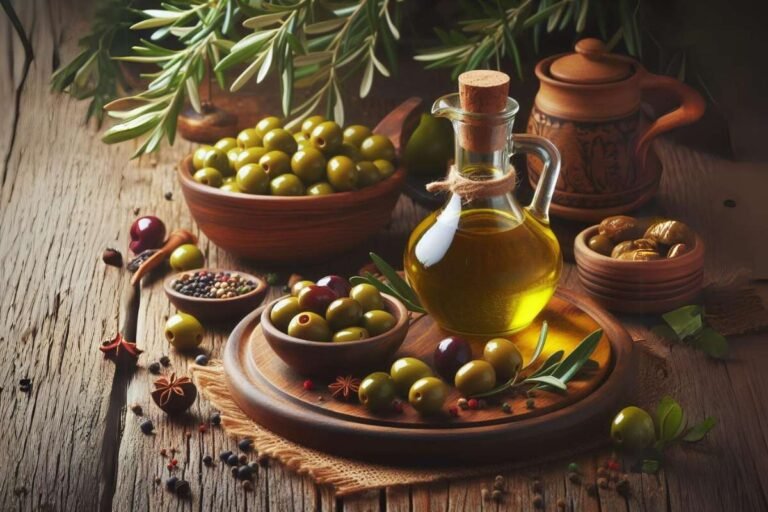Spanish Onions: Sweet, Mild, and Perfect for Everything

Onions are a foundational ingredient in cuisines around the world. They add depth, sweetness, and a savory richness to countless dishes. While you might reach for onions regularly, chances are you haven’t explored all the varieties available. Today, we’ll focus on the Spanish onion – a versatile and delicious variety with a wide range of culinary possibilities.
What are Spanish Onions?
Spanish onions are large, yellow-skinned onions known for their mild and slightly sweet flavor. They’re a type of yellow onion, but their taste is less assertive than standard yellow varieties. This is due to the low sulfur content of the soil where they’re typically grown. That mellow, sweeter flavor profile makes Spanish onions an excellent all-purpose onion.
Whether raw in salads or cooked in soups and stir-fries, Spanish onions bring a mild yet distinct flavor to the table. They are ideal for dishes where a subtle onion flavor is desired without overpowering other ingredients, such as onion rings, soups, and stews.
Exploring the Versatile World of Onions

Before we dive deeper into Spanish onions, let’s get a quick overview of common onion varieties to understand where the Spanish onion fits in the grand scheme of things:
- Yellow Onions: All-purpose, most commonly used onions known for their balanced flavor – somewhat pungent when raw, but they mellow out well when cooked.
- White Onions: Offer a sharper, slightly more pungent flavor than yellow onions and are excellent for Mexican and Southwestern cuisine, where their delicate flavor enhances dishes such as pico de gallo, ceviche, and salsa verde.
- Sweet Onions: Varieties like Vidalia, Walla Walla, and Maui onions are known for their exceptional sweetness and mild flavor – perfect for eating raw or on sandwiches.
- Red Onions: With their striking purple-red color and a mild, slightly sweet flavor, red onions add a pop of color and sweetness to salads, salsas, and sandwiches.
Spanish Onions vs. Yellow Onions: What’s the Difference?
Both Spanish onions and standard yellow onions are categorized as yellow onions and are fantastic for everyday cooking. The key difference lies in their flavor intensity:
- Yellow Onions have golden-brown skin and a slightly stronger, more pungent flavor with a distinct bite to them. This makes them perfect for long-cooked dishes where their flavor mellows and sweetens.
- Spanish onions have a much milder flavor with a subtle sweetness. They retain a bit of onion flavor, but the intensity is greatly reduced. This makes them fantastic for eating raw in salads or sandwiches, in addition to cooked dishes.
Spanish Onions vs. Sweet Onions

Sweet onions, such as Vidalia (grown predominantly in Georgia, USA), Walla Walla, and Maui varieties, are renowned for their exceptionally mild and sweet flavor. These onions have a high sugar content and low sulfur levels, resulting in a pleasant and palatable taste that is perfect for eating raw in salads or on sandwiches. They are also delicious when caramelized, adding a rich sweetness to dishes such as French onion soup and onion tarts.
While Spanish onions do have a sweetness compared to standard yellow onions, they’re not quite as sweet as dedicated sweet onion varieties.
Spanish Onions vs. Red Onions

While Spanish onions and red onions share similarities in terms of flavor and culinary applications, they differ in appearance and taste. Spanish onions are larger and have a milder, sweeter flavor compared to the slightly peppery taste of red onions. Additionally, red onions have a purplish-red skin and reddish-white flesh, adding vibrant color to dishes.
When & How to Use Spanish Onions
The mellow and slightly sweet flavor of Spanish onions makes them incredibly versatile. Here are some ways to use them:
- Raw Applications:
- Salads: Spanish onions add a subtle onion flavor and a bit of sweetness without overpowering other salad ingredients.
- Sandwiches & Burgers: Their mild flavor complements other toppings without dominating the taste.
- Salsas & Dips: Enjoy the fresh onion note while appreciating the sweetness.
- Cooked Applications
- Sautéing: Spanish onions are perfect for sautéing as a base for sauces, soups, stews, curries, and stir-fries.
- Roasting: Roasted Spanish onions develop an even sweeter flavor, making a nice side dish or a flavorful addition to salads and grain bowls.
- Caramelizing: Spanish onions caramelize beautifully, though their lower sugar content may mean slightly longer cooking times compared to yellow onions.
- Soups & Stews: While any onion will do, Spanish onions add a subtle touch of sweetness to long-simmered dishes.
Spanish Onion Substitutes
If you don’t have a Spanish onion, here are some alternatives:
- Yellow Onion: The closest substitute, but remember they have a slightly stronger bite.
- Sweet Onion: Sweeter varieties like Vidalia work well if you’re primarily after the sweetness with less of the classic ‘onion’ flavor.
- White Onion: A decent replacement for raw preparations where a milder flavor is desired.
How to pick Spanish Onions at the Grocery Store
When selecting Spanish onions at the grocery store, follow these tips:
- Firmness: Choose onions that are firm and free from soft spots or blemishes. Avoid any onions that feel mushy or have visible signs of decay.
- Skin: Look for onions with dry, papery skins that are free from cuts, bruises, or mold. The skin should be intact and tightly wrapped around the onion.
- Size: Spanish onions are typically larger in size compared to other onion varieties. Select onions that are uniform in size and shape for even cooking.
- Weight: Opt for onions that feel heavy for their size, indicating that they are fresh and have a higher water content.
- Color: While Spanish onions usually have a golden-yellow outer skin, variations in color are normal. Avoid onions with overly dark or greenish skins, as this may indicate they are overripe or beginning to sprout.
- Smell: Sniff the onions to ensure they have a mild, sweet aroma without any signs of rot or spoilage.
Other Names for Spanish Onions
Spanish onions are also known by other names, depending on the region and the variety. Some of the commonly used alternative names for Spanish onions are:
- Yellow Sweet Onions: The term “Yellow Sweet Onions” is used to describe the sweet variety of Spanish onions, which have a mild and sweet flavor with straw-colored skin and white flesh.
- Jumbo Yellow Onions: Spanish onions are sometimes referred to as “jumbo yellow onions” due to their large size and yellow color. The term “jumbo” is used to describe the large size of the onion bulbs. However, it’s important to note that not all Spanish onions are jumbo-sized, and the term “jumbo” is not a standardized or official name for Spanish onions.
- Sweet Spanish onions: This term is used to describe the sweet variety of Spanish onions, which have a lower concentration of sulfur and a higher sugar content.
- Yellow onions: Spanish onions are a variety of yellow onions.
- Cipollini onions: These are a type of Italian onion that is flat and red, white, or yellow, and they are often confused with Spanish onions.
- Sweet onions: Spanish onions are sometimes classified as sweet onions due to their mild flavor and high sugar content.
Conclusion
Spanish onions are a fantastic and versatile addition to your kitchen arsenal. Their mild, sweet flavor makes them an excellent choice for a wide array of cooked and raw dishes. Next time you’re at the supermarket, grab a Spanish onion and experiment with all the delicious flavors it can add to your cooking!
If you are interested in growing your own Spanish Onions, check out our other article on How to grow Spanish Onions.







2 Comments